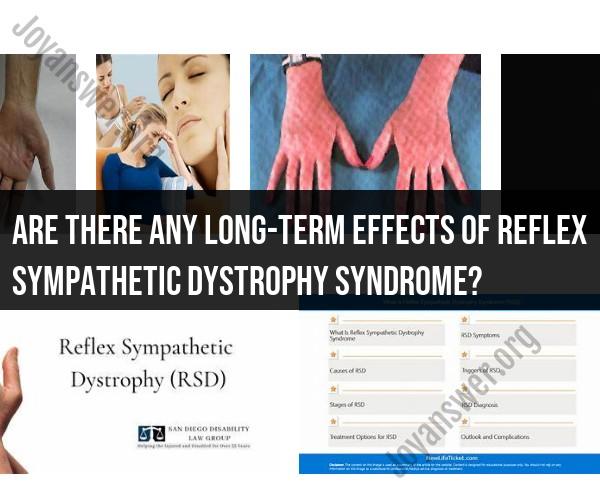Are there any long-term effects of reflex sympathetic dystrophy syndrome?
Reflex Sympathetic Dystrophy Syndrome (RSDS), also known as Complex Regional Pain Syndrome (CRPS), is a chronic and complex neurological disorder that primarily affects the limbs, causing severe pain, changes in skin color and temperature, and various other symptoms. The long-term effects of RSDS can vary widely among individuals and may have a significant impact on their quality of life. Here are some potential long-term effects of RSDS:
1. Chronic Pain:One of the hallmark features of RSDS is chronic pain that can be severe and debilitating. This pain often persists over time and may become constant, affecting the affected limb and sometimes spreading to other parts of the body.
2. Physical Impairment:Continual pain and inflammation can lead to physical limitations and impairments. Individuals with RSDS may experience decreased range of motion, muscle weakness, and difficulty performing everyday activities.
3. Changes in Skin and Nail Texture:RSDS can lead to changes in skin texture, such as swelling, thinning, and increased sensitivity. The affected area may also undergo changes in color, temperature, and sweat production.
4. Muscle Atrophy and Weakness:Due to disuse of the affected limb, muscles may atrophy (shrink) and weaken over time. This can further contribute to physical impairment and decreased mobility.
5. Emotional and Psychological Impact:Living with chronic pain and physical limitations can take a toll on emotional well-being. Many individuals with RSDS experience anxiety, depression, frustration, and a reduced overall quality of life.
6. Sleep Disturbances:Chronic pain and discomfort can interfere with sleep patterns, leading to sleep disturbances and fatigue.
7. Loss of Independence:As RSDS progresses, individuals may become increasingly dependent on others for assistance with daily tasks and activities they were once able to do independently.
8. Social Isolation:The combination of chronic pain, physical limitations, and emotional challenges can lead to social isolation. Individuals may withdraw from social activities and relationships due to their condition.
9. Financial Strain:Managing RSDS may involve ongoing medical treatments, therapies, and medications. The associated healthcare costs can contribute to financial strain, especially if the condition prevents individuals from working.
10. Spread to Other Body Parts:In some cases, RSDS symptoms may spread to other body parts beyond the initially affected limb. This is known as "spreading" or "generalization" and can complicate the management of the condition.
11. Complications with Treatment:The complex nature of RSDS can make it challenging to find effective treatments. Some individuals may experience limited response to treatment, while others may face side effects from medications or interventions.
It's important to note that the progression and severity of RSDS can vary widely from person to person. Early diagnosis and comprehensive, individualized treatment plans can help manage the condition and potentially mitigate its long-term effects. If you or someone you know is experiencing symptoms of RSDS, seeking medical attention and consulting with a healthcare professional is essential for accurate diagnosis and appropriate management.













